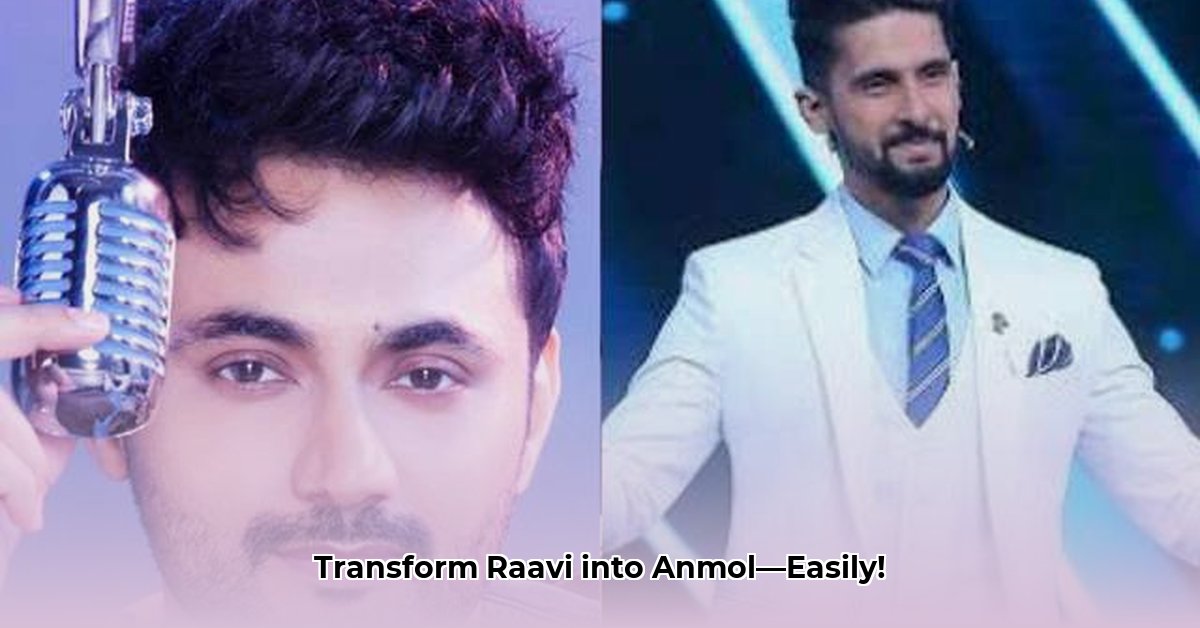“`markdown
Convert Raavi to Anmol Now: Easy Guide
Ever tried to switch Punjabi fonts and ended up with a mess? Moving from the newer Raavi font to the older Anmol Lipi can be tricky. In this guide, we’ll cover the need to convert from Raavi to Anmol, making the process easy. We’ll walk you through the best online tools for converting Raavi to Anmol, showing you exactly how to do it step-by-step. We’ll explain the differences between old and new Punjabi fonts, compare different converters, and give you tips to avoid problems, also including tactics to avoid critical mistakes. Whether you’re writing a story, creating a design, or just want to keep your Punjabi documents up-to-date, this guide will help you convert your text quickly and accurately. We’ll cover everything from simple conversions to handling more complex text, so you can confidently work with Punjabi fonts in any project.
Raavi to Anmol: Your Easy Guide to Punjabi Font Conversion
Switching between Punjabi fonts can feel like navigating a maze, but converting Raavi to Anmol doesn’t have to be a headache. This guide breaks down the process, making it simple and straightforward, even for beginners. This article will also highlight the future of Punjabi digital text. We’ll explore tools, tricks, and the importance of accurate conversion.
Understanding the Punjabi Font Family
Punjabi writing uses different fonts, each with its own advantages and disadvantages. Think of it like choosing between different tools for a job – some are great for one task but not ideal for another. Older legacy fonts, like Anmol Lipi and Asees, are like well-worn tools – familiar, but they might not be compatible with all modern systems. They were designed in an era before widespread Unicode support.
Newer Unicode fonts, like Raavi, are the modern equivalent – designed for seamless compatibility across devices and programs. They work smoothly online, on your phone, and in most word processors. This eliminates compatibility issues with display or editing found in their older counterparts. The advantage of using a Unicode font like Raavi is clear: fewer compatibility problems and easier sharing of your documents. Unicode fonts can represent virtually any character from any language, ensuring global compatibility. This is especially important when sharing documents internationally or across different operating systems.
Here’s a detailed comparison to illustrate the differences:
| Font Type | Characteristics | Compatibility | Pros | Cons |
|---|---|---|---|---|
| Legacy (Anmol) | Older style; may have limited character support; fixed-width | Limited | Familiar to long-time users; may be required for specific legacy systems or documents | Compatibility issues on modern systems; may not display correctly everywhere; difficult to search and index |
| Unicode (Raavi) | Modern, standardized; wider character support; variable-width | Excellent | Works nearly everywhere; better for online use; easier to search and index; supports advanced typography | Might feel unfamiliar to some users initially; requires Unicode-compliant software |
Choosing Your Conversion Tool: A Helpful Comparison
Several online tools can convert Raavi to Anmol, but they aren’t all created equal. Some are more accurate than others, and some offer extra features or support different Punjabi dialects. It’s smart to check reviews and test the tools before committing to one.
| Tool Name | Accuracy | Key Features | User-Friendliness | Potential Downsides |
|---|---|---|---|---|
| India Typing Converter | High | Batch conversion, Unicode to Anmol & Anmol to Unicode, supports multiple Punjabi fonts | Very Easy | May display ads; accuracy can be affected by poor input text quality |
| Typing Baba | Medium to High | Simple conversion, supports several Punjabi fonts | Easy | Accuracy might vary depending on the complexity of the text; fewer advanced features |
| ShrImuktsarSahib.com | Medium | Basic conversion, limited font options | Easy | Could misinterpret certain symbols or characters; limited features; website design may not be modern |
| PunjabiIndiaTyping | High | Unicode to Asees font conversion | Easy | Converts only to Asees font; limited utility if Anmol Lipi is specifically needed. |
| (Many others available) | Accuracy varies greatly | Features vary | Varies greatly | Always check reviews and test with sample text before using an unfamiliar tool; be wary of tools that don’t provide clear information about accuracy or support for different character sets |
A Step-by-Step Guide: Converting Your Text
Let’s walk through the conversion process using India Typing Converter. The steps are very similar for other converters, but the layout of the website may vary slightly. Remember to use the right conversion tool for graphic design and always double-check the output.
Step 1: Access the Converter: Open the India Typing Converter website in your web browser.
Step 2: Select the Fonts: Choose “Unicode” (Raavi) as the input font. Select “Anmol Lipi” as the output font. Most converters have clear dropdown menus to make this selection easy.
Step 3: Paste Your Text: Carefully copy and paste your Raavi text into the designated box on the converter website. Be sure to double-check you’ve copied everything correctly, paying attention to punctuation and special characters.
Step 4: Initiate the Conversion: Click the “Convert” button or its equivalent. Your conversion should begin immediately. Depending on the length of your text, it might take a few seconds to a minute.
Step 5: Retrieve the Converted Text: Once the conversion is complete, the converted Anmol text will appear in a new box. You can then simply copy this text and paste it where you need it.
Step 6: Review and Proofread: Thoroughly review the converted text for any errors. Some characters might not convert perfectly, especially those specific to certain dialects or religious texts. Manual correction may be necessary.
Dealing with Tricky Situations: Advanced Tips
Converting Gurbani (religious texts) or complex documents with multiple formatting styles can be more challenging because of unique characters and script styles. Some characters might require manual adjustment or specialized tools. If you encounter difficulties, seek assistance from someone familiar with Gurbani or typography.
For graphic design or video editing, be sure to embed the Anmol font correctly to preserve the text’s appearance. The process varies across different applications. Consult the software’s documentation for instructions on embedding fonts. Consider using vector-based formats (like SVG) for text elements to ensure scalability and prevent pixelation.
Troubleshooting Common Issues
If you’re running into problems, here are a couple of things you can try:
- Try a different converter: Not all converters are created equal. Experiment with a few different options to see if you get better results. Focus on converters with positive reviews and clear documentation.
- Check for typos: Double-check your original text for any typos or unusual characters. These might be causing errors during the conversion. Correct any errors in the source text before converting.
- Simplify the text: If you’re encountering errors with a specific section of text, try breaking it down into smaller parts and converting each part separately. This can help isolate the problematic characters or formatting.
- Seek assistance online: Use online forums and communities to ask questions or seek expert advice. Many helpful people are willing to share their experiences. Actively search for similar issues and resolutions.
Embracing the Future of Punjabi Digital Text
Unicode fonts, like Raavi, represent the future of Punjabi digital text. They’re essential for broader compatibility and simpler sharing of documents. While there might still be a few conversion challenges, these tools are constantly improving. It is important to follow strategies to avoid critical mistakes. Consider using automated proofreading tools specifically designed for Punjabi text to catch errors that might be missed by the human eye.
We encourage you to explore the world of Unicode fonts and contribute to making Punjabi digital writing more accessible to everyone. If you spot a problem with a converter, consider reporting the issue to the developers to assist in making improvements. Let’s work together to help make Punjabi writing easier for everyone! By supporting the development of better conversion tools and promoting the use of Unicode fonts, we can ensure that Punjabi remains a vibrant and accessible language in the digital age.
How to Accurately Convert Gurmukhi Script for Graphic Design
Key Takeaways:
- Understanding the differences between legacy fonts (like Anmol Lipi) and Unicode fonts (like Raavi) is crucial for successful conversion.
- Selecting the right online tool is vital.
- A step-by-step approach ensures accurate conversion, minimizing errors.
- Advanced techniques address challenges presented by complex scripts and specific design software.
- Unicode fonts offer superior compatibility and long-term sustainability.
Legacy Fonts vs. Unicode: A Crucial Difference
Let’s cut to the chase: Why bother converting Punjabi fonts? Simply put, legacy fonts like Anmol Lipi present compatibility issues. They’re like old cassette tapes in a digital world. Unicode fonts, such as Raavi, offer broad compatibility and future-proofing – the modern equivalent of streaming on demand! Would you rather deal with the hassle of a tape
- Why an App Appeared on My Phone Unexpectedly - November 22, 2025
- How to Stop Unwanted Apps from Automatically Downloading on Android - November 21, 2025
- Why Are Android Games Installing Themselves on Your Phone? - November 20, 2025










